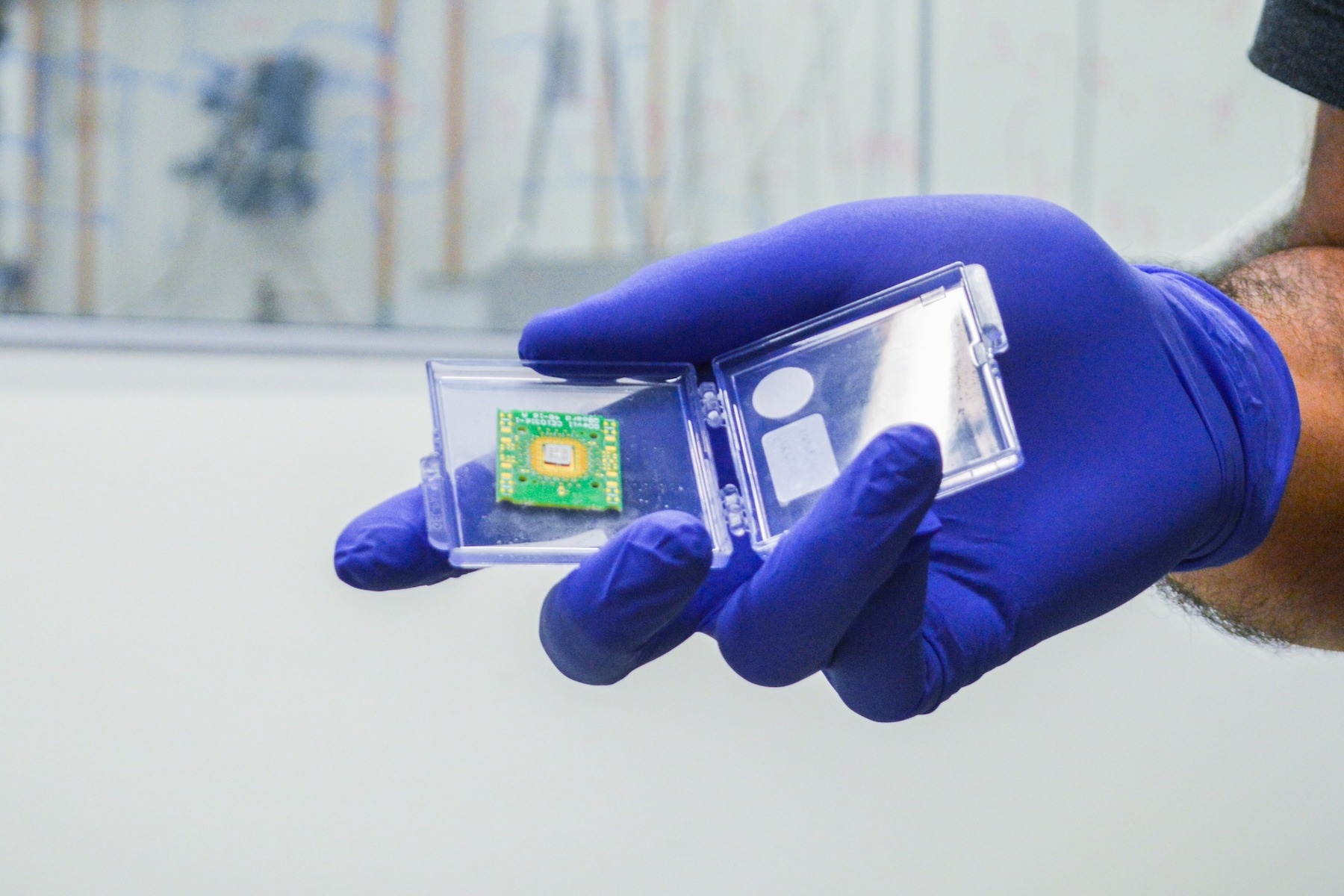A new superconducting diode, an important component in electronic devices, was developed by a team headed by the University of Minnesota Twin Cities. This could aid in scaling up quantum computers for industry use and enhance the performance of AI systems.
 A University of Minnesota Twin Cities-led team has developed a more energy-efficient, tunable superconducting diode—a promising component for future electronic devices—that could help scale up quantum computers for industry and improve artificial intelligence systems. Image Credit: Olivia Hultgren.
A University of Minnesota Twin Cities-led team has developed a more energy-efficient, tunable superconducting diode—a promising component for future electronic devices—that could help scale up quantum computers for industry and improve artificial intelligence systems. Image Credit: Olivia Hultgren.
Compared to other superconducting diodes, the device of scientists is more energy efficient. It can process several electrical signals at a time and comprises a series of gates to control the energy flow, a feature that has not been earlier combined into a superconducting diode.
Nature Communications, a peer-reviewed scientific journal that covers the natural sciences and engineering, publishes this paper.
In an electrical circuit, a diode lets current flow one way but not the other. It is necessarily half of a transistor, the key element in computer chips. Diodes are usually built of semiconductors, but scientists are keen on making them using superconductors, which have the capacity to shift energy with no loss of any power along the way.
We want to make computers more powerful, but there are some hard limits we are going to hit soon with our current materials and fabrication methods. We need new ways to develop computers, and one of the biggest challenges for increasing computing power right now is that they dissipate so much energy. So, we’re thinking of ways that superconducting technologies might help with that.
Vlad Pribiag, Study Senior Author and Associate Professor, School of Physics and Astronomy, University of Minnesota
The University of Minnesota scientists developed the device with the use of three Josephson junctions, which are built by sandwiching pieces of non-superconducting material between superconductors. In this scenario, the scientists connected the superconductors with semiconductors layers. The unique design of the device lets the scientists employ voltage to regulate the character of the device.
Also, their device has the capacity to process several signal inputs, while usual diodes can handle only one output and one input. This feature has the potential to possess applications in neuromorphic computing—a technique of engineering electrical circuits to simulate the way neurons work in the brain to improve the performance of AI systems.
The device we’ve made has close to the highest energy efficiency that has ever been shown, and for the first time, we’ve shown that you can add gates and apply electric fields to tune this effect. Other researchers have made superconducting devices before, but the materials they’ve used have been very difficult to fabricate. Our design uses materials that are more industry-friendly and deliver new functionalities.
Mohit Gupta, Study First Author and Ph.D. Student, School of Physics and Astronomy, University of Minnesota
In principle, the technique the scientists employed can be used with any kind of superconductor, which makes it more versatile and simpler to function with when compared to other techniques in the field. Owing to these qualities, their device is more compatible for use in industries and has the potential to aid in scaling up the development of quantum computers for extensive use.
Right now, all the quantum computing machines out there are very basic relative to the needs of real-world applications. Scaling up is necessary in order to have a computer that's powerful enough to tackle useful, complex problems. A lot of people are researching algorithms and usage cases for computers or AI machines that could potentially outperform classical computers. Here, we’re developing the hardware that could enable quantum computers to implement these algorithms. This shows the power of universities seeding these ideas that eventually make their way to industry and are integrated into practical machines.
Vlad Pribiag, Study Senior Author and Associate Professor, School of Physics and Astronomy, University of Minnesota
This study was financially supported primarily by the United States Department of Energy with partial aid from Microsoft Research and the National Science Foundation.
Along with Pribiag and Gupta, the study group included University of Minnesota School of Physics and Astronomy graduate student Gino Graziano and University of California, Santa Barbara researchers Mihir Pendharkar, Jason Dong, Connor Dempsey, and Chris Palmstrøm.
Journal Reference:
Gupta, M., et al. (2023). Gate-tunable superconducting diode effect in a three-terminal Josephson device. Nature Communications. https://doi.org/10.1038/s41467-023-38856-0.